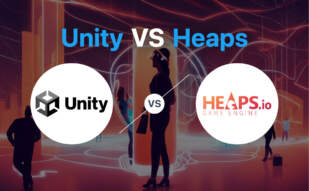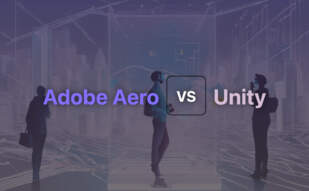Key Differences Between Unity and GameSalad
- Unity is a powerful engine for both 2D and 3D game development, while GameSalad is a drag-and-drop engine mainly used for 2D games.
- GameSalad leverages a graphical UI for rules and behaviors, eliminating the need for coding, while Unity offers a range of scripting languages like BOO, JavaScript, and C#.
- Unity has a mixed pricing model including install-based fees, which have sparked controversy among developers, while GameSalad operated a Free-to-Make model until 2015, and now provides discounted rates for students and educators.
- Unity supports AR/VR game creation and boasts a rich asset store, while GameSalad promotes STEAM learning and offers a program for exploring computer science principles through game development.
For complex, multi-platform 3D games, developers are more likely to prefer the robust engine and extensive resources of Unity. However, for educators and novice developers exploring computer science principles and creating simpler 2D games, the code-free, drag-and-drop interface of GameSalad might be more suitable.

| Comparison | Unity | GameSalad |
|---|---|---|
| Launch Date | 2005 | Free-to-Make model released in 2010 |
| Platform Support | Cross-platform including Android and iOS | iPhone, iPad, Android & HTML5 |
| Language Support | BOO script, Javascript, C# | Drag-and-drop coding platform |
| Game Development | Development of 3D and 2D games | Creation of games with complex behavior libraries |
| Pricing Structure | New pricing model with fees per game install (from Jan 1, 2024) | Pro version with social features, monetization options; Discounts for students, educators, US Military |
| Availability & Access | Free and Pro version with rich features | Available for individuals, or on classroom/school-wide level |
| Technology & Tools | Extensive tools, rendering tech & diverse pre-designed textures | In-App Previewer, web publishing system, drag-and-drop coding platform |
| Integrated Physics | Yes | Yes |
| Community & Training | Active developer community; facilitates learning, troubleshooting | Used in over 223 schools; provides curriculum aligned with ISTE and K-12 CS Framework |
| Interest Areas | AR/VR game development | STEAM learning through game creation |
What Is Unity and Who’s It For?
Unity is a robust game development engine established in 2005 for crafting 3D and 2D games. The platform’s versatility extends to multiple operating systems, backing up the creation of everything from augmented reality to 3D simulations. The intended users are game developers, from solo creators to indie studios, looking to design cross-platform games and applications.

Pros of Unity
- Renders cross-platform games,
- Compatibility with diverse operating systems,
- Integrated asset store packed with pre-designed textures and features,
- Supports several coding languages,
- Active developer community.
Cons of Unity
- New pricing structure, charging developers per game install,
- Mistrust due to unannounced changes,
- Dropped Unity Plus subscription tier,
- Concerns about fees hampering digital preservation efforts.
What Is GameSalad and Who’s It For?
GameSalad is a free, user-friendly game creation engine that allows drag-and-drop development. Launched to facilitate the development of iPhone, iPad, Android & HTML5 games, GameSalad is targeted towards entry-level game developers, students, educators, and those seeking simple, code-free game development.

Pros of GameSalad
- Drag-and-drop coding platform,
- Promotes STEAM learning,
- Supports multi-platform publishing,
- Offers discounts for students, educators, US Military,
- Partnerships with educational institutions.
Cons of GameSalad
- Discontinued free memberships,
- Staff layoffs in 2012,
- Potential limitations due to lack of coding.
The Final Verdict: Unity or GameSalad?
After our thorough breakdown of both technologies, your decision between Unity and GameSalad should hinge on audience, purpose, and budget.
Indie Game Developers
Unity, despite recent backlash, remains compelling for its flexibility and cross-platform options. Robust features for 3D and 2D game development, a versatile asset store, and active community support add to its allure. However, pending pricing changes could tip the scale. Note: No fees apply until surpassing $200,000 in revenue and 200,000 installations.

Education & STEAM Institutions
GameSalad excels as an educational tool. The drag-and-drop engine promotes STEAM learning, and it’s extensively used in schools to teach computer science concepts. Its curriculum aligns with ISTE and state standards. Offering a multi-platform publishing option with no programming knowledge needed, it’s particularly enticing for educators.

Aspiring Mobile Game Developers
Both platforms carry weight here. Unity fosters mobile game development with AR/VR, while GameSalad simplifies iPhone, iPad, Android & HTML5 game creation. Choose based on your bias for coding languages (Unity) or drag-and-drop (GameSalad), and of course, budget constraints.

In a nutshell: Unity’s robust 3D/2D game creation assets are compelling, despite pricing concerns. GameSalad shines as an educational tool and for non-coders venturing into iOS/Android game creation. Identify your needs and let these guide your choice.
Grant Sullivan
Content writer @ Aircada and self proclaimed board game strategist by day, AI developer by night.





